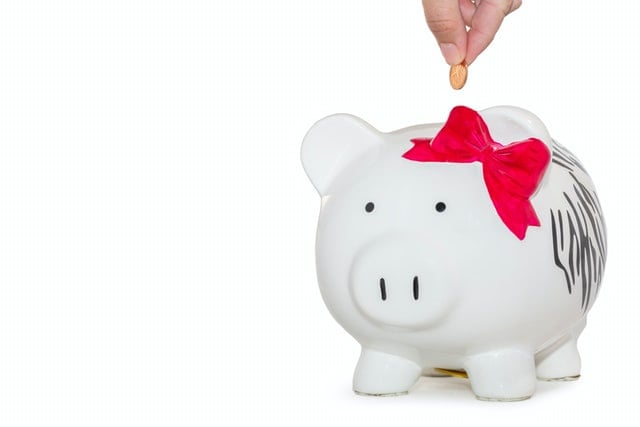Emergency borrowing always has a high cost. Credit cards charge 20%. Early 401(k) withdrawals come with a 10% early withdrawal penalty on top of taxes. Keeping a pile of cash handy is the easiest way to avoid unexpected, expensive debt. Plus, if you follow our guide below, building up a chunk of cash will be easier (and faster) than you might think!
How Much Do I Need?
A cash reserve of three to six months of take-home pay is the gold standard. An alternative approach is to make an annual budget that covers your essential costs and then divide it by four to get a figure for three months of expenses. The advantage of saving the equivalent of your take-home pay is that this allows you to continue with your life without having to cut expenses in order to stay out of debt. It also gives you a cushion in case recovering from an emergency requires additional funds that you don’t currently account for.
Can’t I Just Earmark A Part of My Savings or Checking Account?
Opening a specific account, either a high-interest savings account or a money market fund, is the best place to keep these funds. The higher interest will help you get to your goal quicker, and the lack of access to the funds – you don’t want them linked to checks or a debit card – makes it easier to keep the balance growing. One approach is to use a source like bankrate.com to find where the highest rates are offered and open an account online.
How Do I Get Started?
The most effective way is to set an aggressive target and then set up a recurring deposit that comes out of your paycheck. You’ll want to look at the timing of any other automatic withdrawals you’ve already set up, such as an auto loan or student loans and make sure your emergency fund withdrawal fits with both your pay cycle and your existing commitments, so you’re not left short during any part of the month.
Start as big as you think you can go, and then increase it by 10%. We advocate bumping it up in the beginning, rather than the common rule of thumb of increasing it by $50 every month, because this creates the hassle of continually resetting your deposit amount. The idea is to make it as simple as possible, so it can accrue in the background while you adjust to less ready cash available.
If after a couple months you are finding yourself unhappy and consistently short of cash, you can decrease it a little bit. But most people find that having less money available just makes them more mindful of the ways they spend money and leads to organic expense reduction.
How Can I Boost My Balance?
Take advantage of any large sums of money you get – for instance, a tax refund, an annual bonus or any monetary gifts. Have fun picking out one “splurge” of less than 10% of the total amount of the bonus, refund or gift – and then put the rest directly into your cash reserve fund.
It won’t take long to build up a robust balance, and you may find that even after you’ve secured yourself and your lifestyle, you may want to just shift over to a new goal and keep saving!
Bottom Line
Whether you call it a rainy day fund or a cash reserve, making sure that you have a bulwark of cash against some of the unexpected things that can crop up – an accident, unemployment, or a big expense – makes sound financial sense. It can keep you from having to access very expensive credit card debt, or interrupt retirement or other savings plans, such as the down payment on a home. The goal is to ensure you can recover quickly with minimal disruption and keep your life on track.


